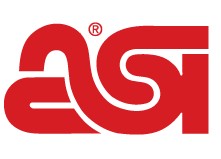Commentary July 14, 2025
New Physical Music Format Showcases Print’s Value as a Collectible
The KitAlbum bridges the CD era and streaming era, and uses print as part of the appeal.
Key Takeaways
• KitAlbums are a new format that combines smartphone-based music playback with collectible physical elements like lyric sheets, photos and stickers, offering a tactile experience similar to vinyl or CDs.
• Despite the dominance of streaming, physical music formats like vinyl and CDs are seeing steady growth, with vinyl sales reaching $1.4 billion in 2024 – marking 18 consecutive years of growth.
• The resurgence of physical formats like KitAlbums highlights a renewed appreciation for print media, especially among younger generations seeking tangible ways to connect with music and support artists.
To say the music industry, and the way we consume music, has changed over the years would be a massive understatement. In a relatively short span of time, we went from vinyl to cassettes, to CDs and eventually MP3s.
The thing with music, though, is it’s cyclical. Not just things like a vinyl record or CD, but influence and consumer preferences. Vinyl had a huge renaissance among millennials and Gen Z who wanted to reconnect with physical media after growing up in the age of the iPod. Now, there’s a new development in music that does more than just bridge the gap between digital and physical realms, it also highlights the importance of print as part of the experience.
It’s called a KitAlbum.
On the tech side, it’s a little plastic square that you can tap onto your smartphone and trigger an app to play the album depicted. On the print side, though, it has all of the things that people might have missed from the vinyl era like liner notes and other fun print inserts. The KitAlbum includes square printed cards with things like photos of the artist, stickers, lyric sheets, booklets and other printed media designed to create a “multi-sensory digital album experience.”
The piece itself is around the same size, if not a little smaller, than a CD jewel case, but a little thicker. It’s less intimidating than a 12” vinyl record, more substantial to look at than a cassette, but still easily stacked on a shelf for those who want to collect things.
The physical media revolution is a very real thing, too. The Recording Industry of America reported in its 2024 year-end revenue report that physical music formats grew 5% over the previous year, hitting $2 billion. Vinyl record sales revenue alone grew 7% to $1.4 billion – the 18th consecutive year of growth. Interestingly, CDs grew 1% to $541 million, indicating that younger generations might be finding those as the new “retro” format in their parents’ garages and basements.
The thing with vinyl records, though, is that they require other hardware. At the minimum, you’d need to buy an all-in-one record player, which can be costly, to say nothing of more advanced setups including turntables, speakers, amplifiers and any other accessories for audiophiles.
Combine that with the fact that, per the RIAA report, digitally downloaded music declined 18% year-over-year to $336 million. “Both digital album sales and individual track sales were down double digits,” the report said. “Downloads accounted for 2% of U.S. recorded music revenue in 2024, down from a peak of 43% of revenues in 2012.”
The KitAlbum only requires your phone, which, let’s be real, everyone has already and everyone already uses for listening to music. The physical aspect of it has the bonus of collectability and some feeling of contributing to an artist they like rather than simply paying a streaming service.
So what does this all have to do with print?
Using Print To Bridge the Gap
At a time when streaming is the main way people are listening to music, coupled with the fact that streaming services like Spotify are notorious for not generating much revenue at all for most recording artists, creating a way to have a physical album that immediately pairs with a smartphone captures the sentimentality of physical media with the convenience of streaming.
For younger generations that want to have real, tangible collections and representations of their musical tastes, things like a KitAlbum could be a big new thing. For printers, this is good news because the KitAlbum shows that printed lyric sheets, photos, inserts and stickers are how younger generations could choose to express their artistic interests, and how recording artists might appeal to consumers for more and different album sales.

